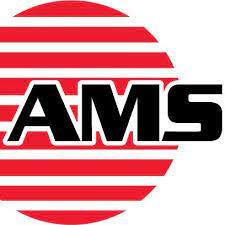EV Charging For All: Chicago-Based Firm Aims To Solve One Of The EV Market’s Most Pressing Challenges

Along with California, Oregon and Washington, Illinois is one of the states spearheading the push away from gas-powered vehicles. The state announced its plans last year to put 1 million electric vehicles on the road by 2030 to reduce greenhouse gas emissions.
As more people across the country worry about environmental impacts and climate change, the popularity of electric vehicles has soared. During the second quarter of this year, nearly 200,000 EVs were sold nationwide — a more than 65% increase from Q2 2021.
With more EVs expected to be cruising around Illinois in the near future, residents in the greater Chicago area are beginning to evaluate if their homes have the ability to support EV charging infrastructure.
“EVs are gaining traction because they’re a greener alternative to gas-powered vehicles,” said Dillon Buschmann, project engineer at AMS Industries. “They are becoming increasingly popular in Chicago because driving distances and commute times are typically short. With its newfound popularity, the largest obstacle we’re facing with EVs is improving accessibility to power for charging.”
AMS Industries is a full-service mechanical, electrical and plumbing contractor. For more than five decades, it has provided commercial HVAC, ventilation, system automation and construction management services across the greater Chicago, northern Illinois, northwest Indiana and Nashville areas.
According to a report from Axios, Chicago has nearly 550 Level 2 public EV charging stations scattered across the city that provide a full charge in three to eight hours. However, only 83 stations are Level 3 chargers, able to charge a vehicle in only 15 minutes. The cost of Level 3 charging can be up to 40% higher than Level 2, or $10 to $30 per charge.
Buschmann said EV charging is a simple process for single-family homeowners, who can just connect to their own personal chargers, but for those who live in multifamily complexes, it’s a different story.
“Chicagoans that live in condominiums are finding it more difficult to find charging locations across the city that are cost-effective and easily accessible,” he said. “The first step to providing condo owners with at-home charging is to work with building management to determine how much power their building can access. From there, we can figure out the type and amount of charging stations each building will need.”
There are several solutions to multifamily’s EV charging challenges, he said. For buildings without assigned parking spots, installing a central power bank to supply several charging stations is common.
Assigned spots, however, are far more common in Chicago, Buschmann said. Every parking spot would need to have its own charging station for the system to work properly.
“Though each complex has their own set of needs when it comes to EV charging, AMS can mitigate any potential power management issues by implementing an available load management tool,” said Bob Dobbins, executive vice president at AMS Industries. “With this tool, an EV charging system will equally distribute power to each vehicle charging at a specific point in time.”
For one of AMS Industries’ clients in downtown Chicago, finding a solution that allows its residents to quickly and seamlessly charge their EVs was paramount.
AMS quickly determined the source and capacity of the building’s electrical infrastructure. The team designed an electrical distribution system that allows for point-of-use metering at each parking spot, providing a full charge in 10 hours. The system has the ability to charge 40 EVs, though only 12 charging locations are needed at this time.
To help offset the cost of installation, the state of Illinois offers owners the chance to apply for a tax rebate. AMS continually monitors the available rebates and incentives and advises clients as they try to adapt to new changes and incentives, Dobbins said.
Designing EV chargers for the needs of today while remaining conscious of future expandability is crucial, Dobbins said.
“To make our clients' charging stations easily adaptable to future charging needs, we offer energy and lighting upgrades, help with their HVAC and elevate the efficiency of those systems to increase the amount of available power in the building,” he said. “Essentially, we’re designing electrical distribution systems. We can install some now, and later we can add additional power panels and electrical distribution equipment for more chargers in the future when the building deems it necessary.”
This article was produced in collaboration between Studio B and AMS Industries. Bisnow news staff was not involved in the production of this content.
Studio B is Bisnow’s in-house content and design studio. To learn more about how Studio B can help your team, reach out to studio@bisnow.com.

